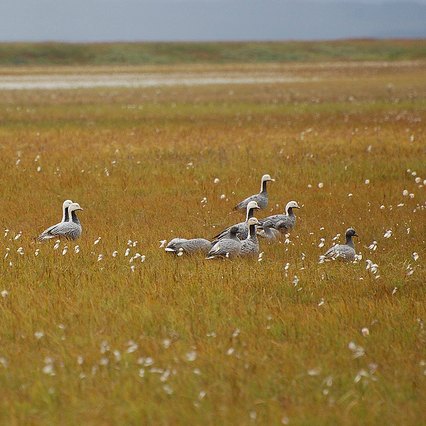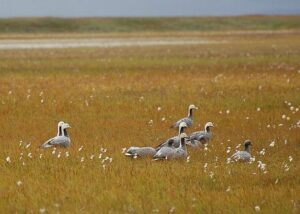
Interns on the issues: Can we co-exist with migratory birds?
Our summer interns, Kat, Catherine and Hannah, have already jumped into legal research and writing—and into Alaska’s wilderness. This summer, they will write blog posts to share their adventures, and tell us what they’re doing, seeing and learning. Here’s part 1 of their introductory blog about what they’re doing at Trustees. This one talks about how we can co-exist with migratory birds. Read part 2 on wolves as vermin or vital species, and part 3 on protecting Bristol Bay fisheries from a huge industrial mine proposal.
Interns on the issues: At Trustees, each of us is gaining valuable experiences as we work with attorneys to protect Alaska’s lands, waters, wildlife, and communities. With a diverse range of projects and assignments, we are learning about new areas of law and legal strategies that will help us in our future careers. Here are some issues we’ve been learning about while here.
Kat on Izembek: Can We Co-Exist with Migratory Birds?
One of the Trustees issues I’m interested in involves a proposed land exchange and road construction project in the Izembek National Wildlife Refuge and Wilderness. The Izembek is the smallest wildlife refuge in Alaska, but also one of the most ecologically unique and important.
Located in the Aleutian Islands between the Bering Sea and the Pacific Ocean on a narrow, three-mile isthmus, Izembek is surrounded by wetlands, lagoons, and shallow bays that provide vital habitat for birds, brown bears, and caribou. Izembek’s undisturbed and pristine nature is particularly critical for Black Brant, Tundra Swans, Emperor Geese, and Steller’s Eiders, all of which are protected under the Migratory Bird Treaty Act.
Nearly the entire global population of Pacific Black Brant, approximately 130,000 birds, relies on the Refuge for a safe place to nest and feed before migrating 3,000 miles to Mexico for the winter. The Refuge also contains the only non-migratory population of Tundra Swans in the world — a population that has declined 75 percent since 1980.
Emperor Geese and Steller’s Eiders, some of the rarest bird species on the planet, both winter in the Aleutian Islands, where they rely on Izembek’s abundant and undisturbed resources during a vulnerable time in their life cycles when food and open water are not available elsewhere.
Finding alternatives to a road that threatens wildlife
Unfortunately, Izembek has been the target of a proposed land exchange and road construction project that would connect the small and isolated island communities of King Cove and Cold Bay.
The debate over the road has been going on for two decades. While a road would provide ground transportation between the communities, it would also irreparably damage a Refuge that has been protected for over fifty years, and cause profound harm to the numerous species that rely on it.




